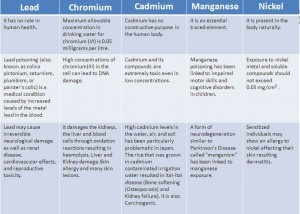Ganapati is coming…
Sri Vinayaka Chathurthi is coming soon … Sep 9th this year ……
What thoughts cross your mind when u hear about Vinayaka Chathurthi
Did you think about…
Modak….. ?….Ok …What else
The shiny glossy colorful mesmerising idols of Ganapati
And ….. explosion of creativity in preparing the Ganapati idols, pandal decorations….
Poojas, Bhajans,
And… loud music, unattended garbage ….and..
Environmental damage ????????
You know….
Vinayaka Chathurthi is celebrated in the Bhadrapada month every year.
Idols of Ganapati of different sizes made of clay and other materials are setup in community pandals, individual homes and pooja performed on Chaturthi day and in many places for 10 days.
All the idols are immersed in water on the same day or over the 10 days ending with Anantha Chaturdashi.
This is typically a time for all the young folks in the area to get together, setup pooja pandals…. Go around all the nearby pooja pandals and view all the elaborate arrangements, decorations and of course… prasad….?
Do you know?….
The idols were earlier usually made of clay, were not painted or used natural dyes, and there were only a few idols worshipped in the village /town.
Nowadays, the idols are made of jute, hay, cloth, paper, wood, Thermocol, Plaster of Paris, adhesive materials and synthetic paints. Usually, the bigger idols are made using non-clay material.
Thermocol is not-biodegradable while paints contain heavy metals such as chromium, lead, nickel, cadmium and zinc, Plaster of Paris is many times contaminated by Asbestos, a known carcinogen.
Typically, the Ganapati idols that have glossy, shiny finish have been coloured using synthetic paints. These paints contain toxic ingredients that get released to the water and soil after immersion. For example, the Golden color used for the crown gets its color from Chromium compounds, the green , yellow colors from lead and lead compounds. These toxic chemicals have a harmful affect on plants, animals and humans.
In many places, the idols are immersed in open wells, tanks, lakes, rivers, sea. These water bodies are also used for drinking water and irrigation and other activities. These toxins when released to water seep into the soil and cause both short-term and long-term impact on the environment and health.
During the immersion, a lot of the pooja material is wrapped in sealed plastic bags and disposed off in the water bodies. At the pandals, lots of plastic is typically used for prasad, and not correctly disposed.
The bio-accumulation of heavy metals in the biological system transfers the toxic elements from the producer to consumer level which can be a future health hazard.
Detailed studies have been made by concerned individuals and various organizations that show the increasing quantities of the toxic material over the years.
Pollution measurements …(studies done in Bhopal, Bangalore)
BDL= Below detectable limit.
BOD – Biological Oxygen Demand
COD – Chemical Oxygen Demand
All units except pH and turbidity are in mg/I.
Health impact of the pollutants
Ganapati pooja was not intended to create pollution….
We are contributing to pollution because of lack of awareness of the impact of the distorted practices during Ganapati pooja. Vinayaka Chaturthi, like most other Sanatana Dharma practices, is intended to promote awareness of the importance of the environment and the close dependencies between the human species and the environment.
The Rishis were aware of the enormous negative impact of unmitigated human activities on the whole environment and its effect on human welfare. The various festivals at different times of the year are part of elaborate lessons/reminders to mankind about maintaining harmony with the environment apart from help with man’s spiritual journey.
Significance of Ganapati pooja…
The image of Ganapati with his elephant head itself is a symbol of nature.
The concept of preparing the idol with clay obtained from nature and returning it back to nature by immersion is very symbolic of the right path for mankind to return to the roots of nature.
A special ritual during traditional Ganapati pooja is the Doorva Yugma Pooja (Archana of Lord Ganapati with grass).
Another unique ritual during Ganapati pooja is the Archana with the leaves of 21 different plants, trees.
All this leads us to think about..
How come such a environment friendly practice has morphed into something with diabolically opposite effect. Is it being observed in the right spirit?
How have the concepts and practices have deviated over time from the ideal, prescribed traditions.?
We have been placing more emphasis on grandeur and pomp and color and ignoring the basic ideas behind Ganapati pooja.
It is high time we review our practices and understand and perform the pooja in the right spirit ….


